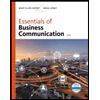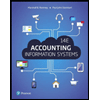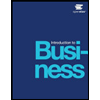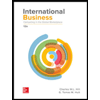
Book Title
10th Edition
ISBN: 9781337605656
Author: CROSS
Publisher: CENGAGE L
expand_more
expand_more
format_list_bulleted
Question
Chapter 18, Problem 2RE
Summary Introduction
Case summary: Person DB was a director in company FBF which owned a branch of fitness club in Mexico. DB owned 15 percent of the total stock of the company FBF and was also holds the position of a tanning technician at one of the fitness clubs in the city. According to finance report, FBF was facing financial loss. ML discussed terminating the tanning operation. DP who was one of shareholder discloses that DB owned stock in company S from which FBF purchased its tanning equipment. DB and MV owned 37 percent of FBF also held shares of the company S and voted to replace ML from the board of directors.
To find: The share of DB in S establishes a conflict of interest.
Expert Solution & Answer
Want to see the full answer?
Check out a sample textbook solution
Students have asked these similar questions
General accounting question
Need answer
Nova Supplies Inc. offers credit terms of 3/15, net 50 to its customers. What is the nominal cost of trade credit if a customer forgoes the discount and pays on the 50th day? (Assume 365 days in a year.)
Knowledge Booster
Similar questions
- Solve this Accounting problemarrow_forwardNonearrow_forwardDelta Health Lab is considering purchasing a new diagnostic imaging system for lung screenings. The system will cost $92,000. The lab estimates it can charge $45.00 for each scan, while the actual cost to perform one scan is $12.00. What would the profit be for conducting 14,000 lung screenings?arrow_forward
- Financial accounting 11arrow_forwardWhat is the second year's annual depreciation expense?arrow_forwardLast year, you purchased a stock at a price of $48.00 per share. Over the course of the year, you received $2.40 in dividends and inflation averaged 2.8 percent. Today, you sold your shares for $52.20 per share. What is your approximate real rate of return on this investment?arrow_forward
arrow_back_ios
SEE MORE QUESTIONS
arrow_forward_ios
Recommended textbooks for you
 BUSN 11 Introduction to Business Student EditionBusinessISBN:9781337407137Author:KellyPublisher:Cengage Learning
BUSN 11 Introduction to Business Student EditionBusinessISBN:9781337407137Author:KellyPublisher:Cengage Learning Essentials of Business Communication (MindTap Cou...BusinessISBN:9781337386494Author:Mary Ellen Guffey, Dana LoewyPublisher:Cengage Learning
Essentials of Business Communication (MindTap Cou...BusinessISBN:9781337386494Author:Mary Ellen Guffey, Dana LoewyPublisher:Cengage Learning Accounting Information Systems (14th Edition)BusinessISBN:9780134474021Author:Marshall B. Romney, Paul J. SteinbartPublisher:PEARSON
Accounting Information Systems (14th Edition)BusinessISBN:9780134474021Author:Marshall B. Romney, Paul J. SteinbartPublisher:PEARSON
 International Business: Competing in the Global M...BusinessISBN:9781259929441Author:Charles W. L. Hill Dr, G. Tomas M. HultPublisher:McGraw-Hill Education
International Business: Competing in the Global M...BusinessISBN:9781259929441Author:Charles W. L. Hill Dr, G. Tomas M. HultPublisher:McGraw-Hill Education

BUSN 11 Introduction to Business Student Edition
Business
ISBN:9781337407137
Author:Kelly
Publisher:Cengage Learning

Essentials of Business Communication (MindTap Cou...
Business
ISBN:9781337386494
Author:Mary Ellen Guffey, Dana Loewy
Publisher:Cengage Learning

Accounting Information Systems (14th Edition)
Business
ISBN:9780134474021
Author:Marshall B. Romney, Paul J. Steinbart
Publisher:PEARSON


International Business: Competing in the Global M...
Business
ISBN:9781259929441
Author:Charles W. L. Hill Dr, G. Tomas M. Hult
Publisher:McGraw-Hill Education
